
Technology Innovation and Incubation Centre (TIIC) has been started in the year 2016 with an ample closet space of 305.632 sqm in institute premises. The TIIC centre enables the infrastructural support to students and faculty to convert their ideas into final products. This centre is recognized as business incubator by ministry of Micro Small and Medium Enterprises (MSME) through which any student, faculty and innovators can apply for seed fund and capital fund support. The ministry of MSME has sanctioned technology business incubator (TBI) with a grant of Rs. 92.47 lakhs to procure plant and machinery towards smart manufacturing sectors. MSME Ideathon 3.0 (women) is part of the MSME Innovation Scheme, providing a grant of Rs. 75 lakhs for students startups support during February, 2024. In addition, the institute has the Maker Space, Science and Technology Start-Up park, IPR cell and centre of excellences in all emerging areas of engineering to support students and faculty innovations. During the last five years 180 students/faculty innovations has been supported and generated 586 patents.
Innovation and Incubation Centre is a space for new age entrepreneurs and young minds to transform their innovative ideas into viable business propositions. TIIC will ensure that incubates have access to technological assistance which will be generated through mentors with multidisciplinary expertise. We encourage young enthusiasts with creative pursuits with an inherent zeal to be entrepreneurs to take advantage of this novel initiative.
To nurture the culture of Innovation and Entrepreneurship among the students, faculty, stakeholders and community Innovators.
To foster Innovation by identifying the problems and providing solutions that would be commercialized into a venture development. Product development would be the prime focus by normalizing resources.
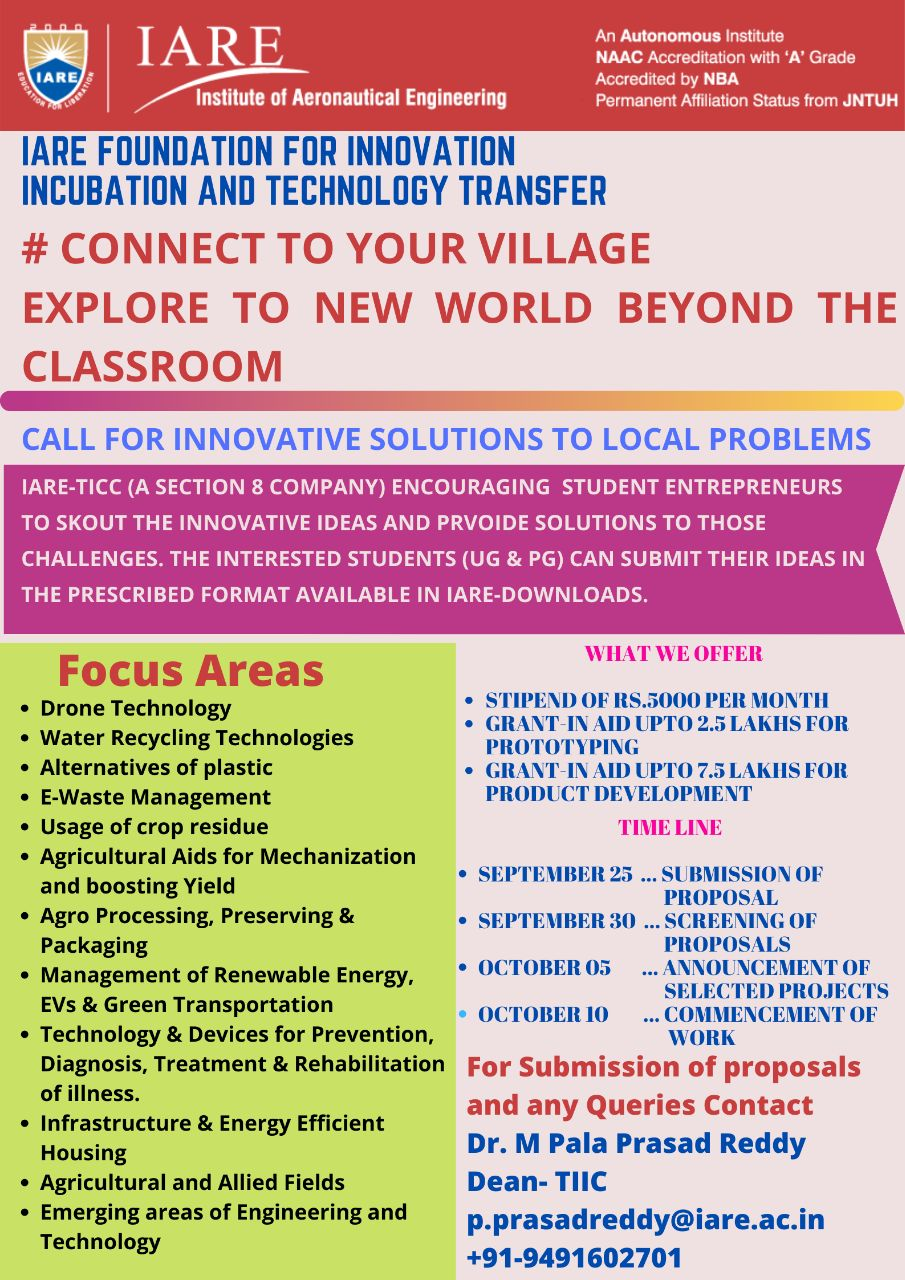
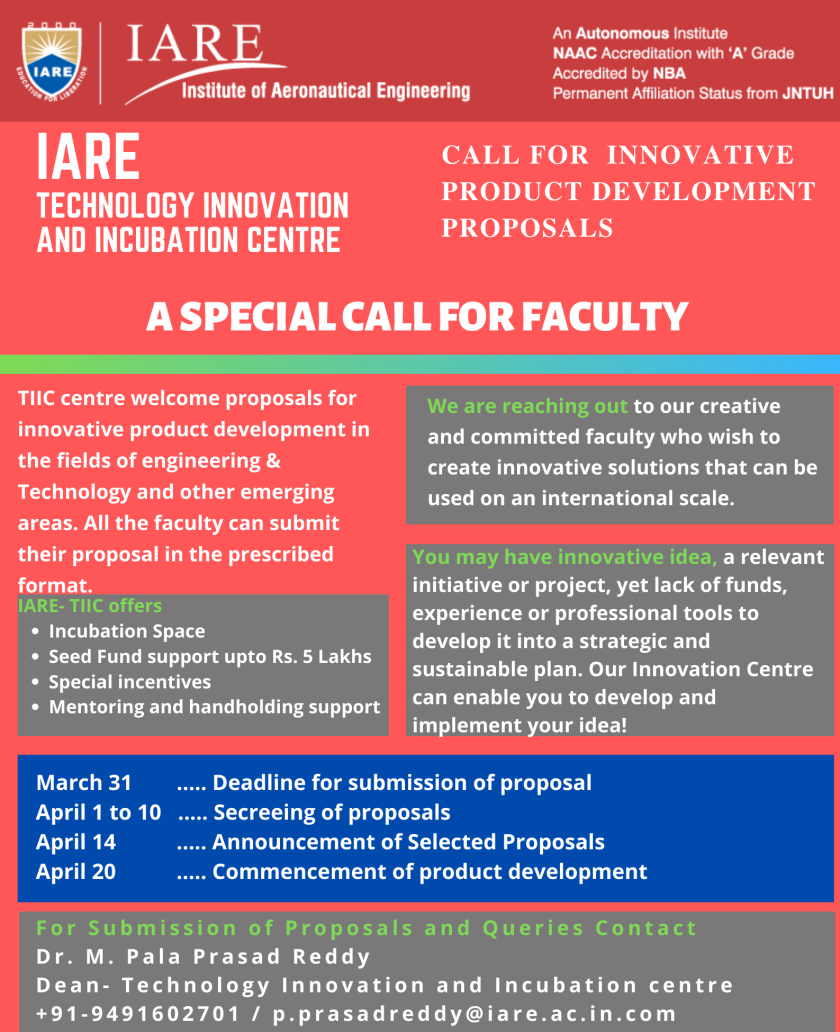
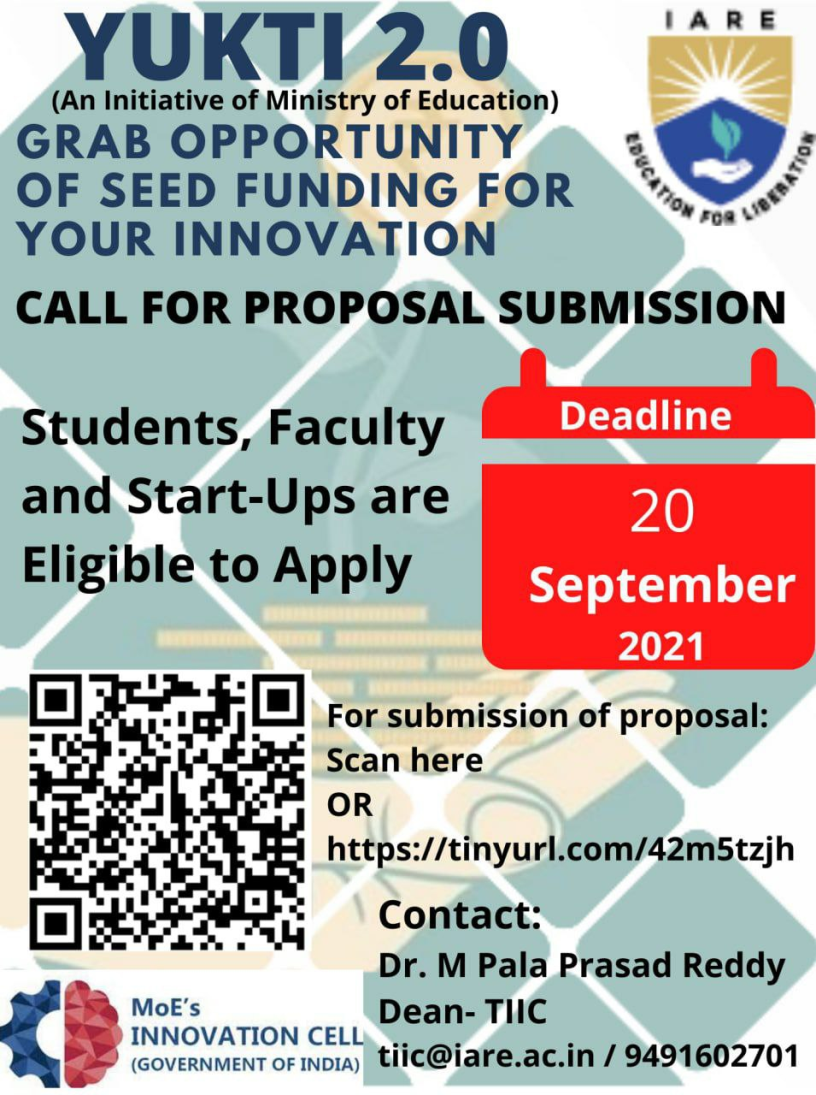
Maker Space, Technology Innovation and Incubation Centre, Science and Technology Start-Up Park, ASPIRE- TBI Centre, and Community Innovation Centre all contribute to the ecosystem of a technological campus incubator, assisting innovators and start-ups in attaining their goals.
| S.No | Name of the Facility | Facilities |
|---|---|---|
| 1 | Maker Space | - 200.6 sq.m Area Area - Plant & Machinery for prototyping |
| 2 | Technology Innovation and incubation Centre (TIIC) | - 305.632 sq.m area - Office space (250seating capacity) - Machinery available for fabrication |
| 3 | Science and Technology Startup Park (STSP) | - 76.16 sq.m Area - Office space (18 seating capacity) |
| 4 | MSME ASPIRE TBI (Funded by MSME) |
- 6000 sq.ft Area - Infrastructure for Product Development - Machinery available for Smart Manufacturing |
| 5 | Common facilitation centre for SC/ST Women Empowerment (Funded by DST) |
- 5000 sq.ft Area - Infrastructure (Garment & Textiles, Engineering & Design) – 51 Machinery available for training activities. |
The Innovation Steering Committee represents a guiding coalition to set innovation priorities, change the culture, allocate resources, and make decisions. The committee explores emerging innovations and effective practices, helps their stakeholders to understand the related challenges and opportunities. The Committee evaluates issues and challenges and makes recommendations to the Board / Management on innovation policies, plans, and tactics for addressing identified challenges and opportunities. The Committee may commission the annual operating and capital budgets approved by the Board.
| S.No | Name | Designation | Organization | Role |
|---|---|---|---|---|
| 1 | Dr. L V Narasimha Prasad | Principal | IARE, Hyderabad | Chairman |
| 2 | Dr. K Raghu Ram Mohan Reddy | Associate Professor | IARE, Hyderabad | Convener |
| 3 | Sr. Ch Jayasimha Reddy | CEO | MTE Industries, Hyderabad | External member |
| 4 | Dr. Zahoorullah S MD | Chief Innovation Officer | Atal Incubation Centre ALEAP WE Hub, Supported by AIM NITI AAYOG GOI, Hyderabad |
External Member |
| 5 | Dr. Ch. Srinivasulu | Professor | IARE, Hyderabad | Internal Member |
| 6 | Dr. Ranjith Kumar Gatla | Associate Professor | IARE, Hyderabad | Internal Member |
| 7 | Dr. GVR Seshagiri Rao | Associate Professor | IARE, Hyderabad | Internal Member |
| 8 | Dr. Shaik Jakeer Hussain | Associate Professor | IARE, Hyderabad | Internal Member |
| 9 | Dr. M Pala Prasad Reddy | Associate Professor | IARE, Hyderabad | Internal Member |
| 10 | Dr. Shikha Kumari Pandey | Assistant Professor | IARE, Hyderabad | Internal Member |
Innovation ecosystems create an active flow of information and resources for ideas to transform into reality. Through these ecosystems, we are building a process by which more innovators and entrepreneurs can develop and launch solutions to solve real-world problems, faster. This process creates expertise in new areas, helps to diversify the economy, and allows businesses to meet their customers where they are. Additionally, an innovation ecosystem provides the means to create economic stability and resource sharing.
| Phase | Ecosystem Layer | Key Interventions |
|---|---|---|
| Pre- Incubation | Exposure / Culture- Building |
|
| Ideas / Innovation |
|

Technology Innovation and Incubation Centre mission is to support Innovators through the product design and development journey. We offer a variety of design and fabrication services to prototype and iterate your product idea before scaling up production. Our experts will guide you through the process step-by-step, elevating you from rough draft to professional. From product design to production solutions, we are here to help you innovate quickly and more efficiently.

The Biplane Quadrotor represents the next generation of unmanned aerial vehicles (UAVs), combining the vertical take-off and landing (VTOL) capabilities of a quadrotor with the efficiency and stability of a fixed-wing aircraft. This innovative configuration allows the Biplane Quadrotor to seamlessly transition from hovering like a helicopter to cruising like an airplane, offering unparalleled versatility and performance.
The Biplane Quadrotor maximizes operational efficiency, allowing for extended flight times and increased range compared to traditional UAVs. With a range of 15 kilometers and an endurance of 45 minutes, it can cover vast distances and complete long-duration missions with ease.
With its ability to perform both vertical and forward flight, the Biplane Quadrotor is ideal for a wide range of applications, including aerial photography, surveillance, agriculture, and environmental monitoring.
The Biplane Quadrotor opens up a world of possibilities for aerial exploration and data collection. Whether you're conducting research, monitoring crops, or capturing stunning aerial footage, the Biplane Quadrotor is the ultimate tool for the job.
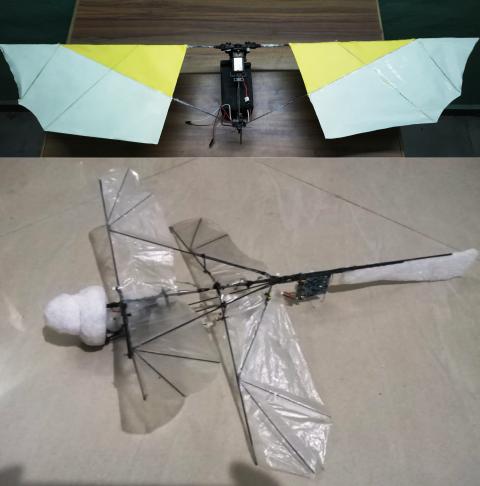
The idea of the product finds its roots dated back into the old age approach of mankind to mimic the elements of the nature and develop machines or tools that fetch revolutionary benefits in any field of application. One such attempt is made to fabricate and produce a mechanical model that replicates rather mimics the entire functionality and features of the DRAGONFLY both in flight and action.
The main idea is to design a wearable for the blind people that help them to walk and detect the environment around them with much ease and almost make them Independent in their life. Like all other people, blind can also walk with confidence without any extra holding object by wearing apron. The Apron also equipped with Google Vision API services, Lidar Technology, Arduino Nano and Raspberry pi 4. Unlike the current working products in this field, the design of this system is made considering the fact that most of the blind people are not used to operating high end technical products.
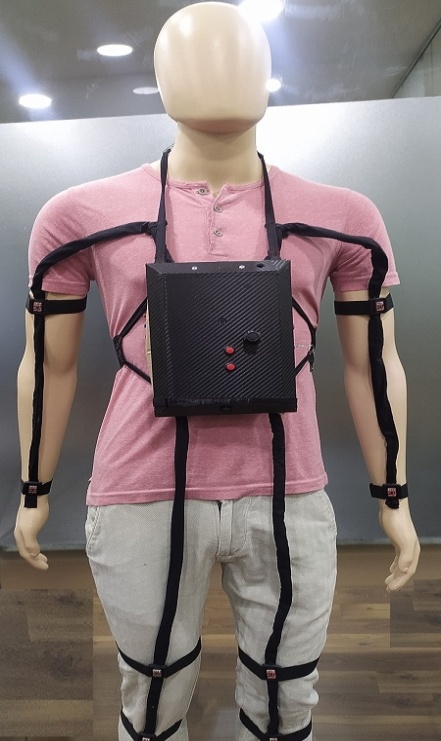
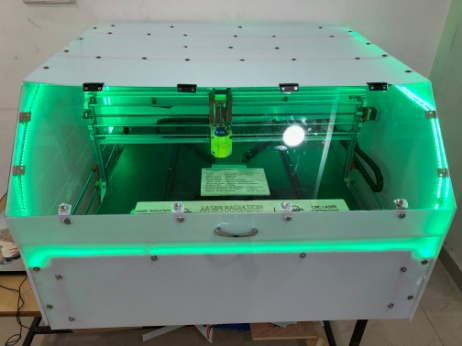
The micro scale CNC machine is predicated on all automated jobs within the field of metal, wood and ceramic engraving for innovative designs in both decorations and interior designing. It’s a one stop buy multiple needs working in various sorts of materials with different tool sets. One tool post can comprise of multiple tools which aid in multiple jobs in a very single pass including machining of composite materials. The built up is predicated on ADRUINO system which is processed by a picture processing software GBRL and LITE FIRE, which are freeware available online. The image processor converts the fed photos to engrave points which are further transferred to the motherboard of the system which iterates for the most effective possible lead to the fabric of choice. The machine can further recognize the fabric being fed and simultaneously select the tool for achieving the most effective possible results which is up to 98% accurate.
The main idea is to develop a Solar Powered tricycle for the physically challenged human beings. Independent drive for front wheel using BLDC motor is used. All the design specification is considered after analyzing the problems from the handicapped person. Comfort and safety of the person in the tricycle is an important criterion.

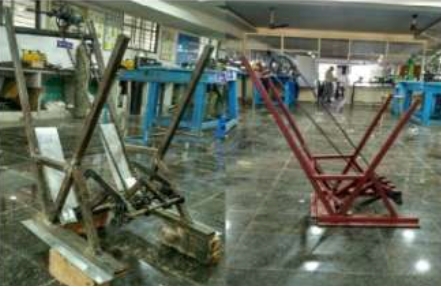
To mechanize the transplanting system several attempts have been made to design and fabricate transplanting machines. An attempt has been made to fabricate a manual paddy transplanter which is effective as well as cheap. The objective of this project is to design a paddy transplanting mechanism to transplant rice seedlings by small scale farmers in the country.
A mechanical means of extraction of oil is designed, fabricated with locally available materials and tested for different seeds like groundnut, walnut, sunflower and almonds. It is a desktop machine, much easier to operate than bigger oil press machine. It is very convenient that extraction can be done at any place and time if seeds are available. It is a low cost hand operated oil extraction machine which can be used at domestic level. It consists of crank, press cage, screw shaft and frame. Cranking is done manually for extraction of oil.

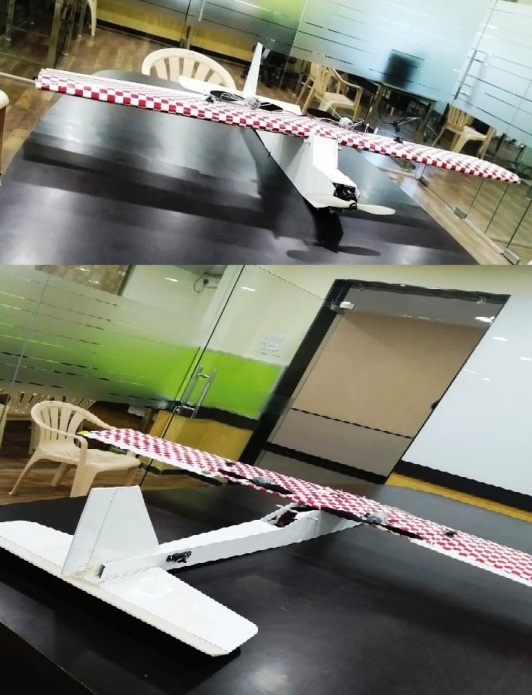
A wind powered plane can cruise an aircraft with wind energy by constructing windmills like structures on the trailing edge of the wing of a plane. With the flow of the wind, the wind mills are going to rotate, which in turn converts this wind energy into electrical energy. The converted electrical energy will be allowed to store in a battery, in which the automatic switch is introduced which is used to swap the main battery and the converted wind energy stored battery. By using this wind powered energy plane we can reduce pollution, fuel cost, battery life of the aircraft.
This is a laser based stimulus device which consists of a basic laser emitter, an indigenously made laser sensor made up of light dependent resister. Every time when the beam of laser is interrupted the Buzzer beeps UP and sends out a signal, this signal can be used to Trigger any other embedded device, such as a simple camera or home alarm or internet connected Intruder sensing device or any fancy security system. This very simplistic modular and plug and play device can prove to be a game changer in the field of personal security.
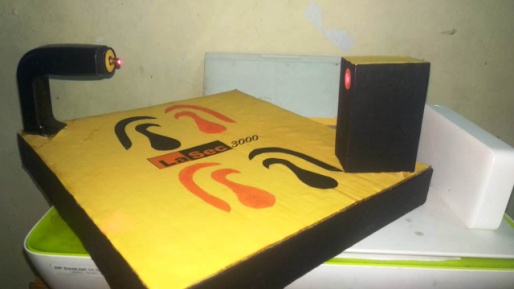
Students and faculty members at the institute benefit from the Technology Innovation and Incubation Centre's financial and in-kind support. The institution provides funding with the goal of facilitating the creation, growth, and research of engaged and inclusive educational experiences.
The institute recognized as MSME- Business Incubator and through our centre any student, faculty or Innovator can apply for Seed Fund support from MSME.
The SIPP scheme is financially supported by Institute management and offering up to Rs. 2.5 Lakhs for Prototyping , Rs. 7.5 Lakhs for Commercialization and fellowship of Rs.5000 per month for all the student Innovators of IARE.
The institute offering Seed Fund support up to Rs.5.0 Lakhs for all the faculty members for Innovative Product Development.
| 2022 | Institute of Aeronautical Engineering (IARE), positioned in the Band of 51-100 in the NIRF (India Rankings 2023) Innovation Category of Private or Self-Financed College/Institute’s in Atal Ranking of Institutions on Innovation Achievement (ARIIA) – 2022, as per Ministry of Education Innovation Cell, Govt. of India. |
| 2021 | Institute of Aeronautical Engineering (IARE), is categorized as 'Band Excellent' institution in category of ‘Private or Self-Financed College/Institutes’ in Atal Ranking of Institutions on Innovation Achievement (ARIIA) – 2021, as per MHRD’s Innovation Cell, Ministry of Education, Govt. of India. |
| 2020 | Institute of Aeronautical Engineering (IARE), is categorized as 'Band B' institution (rank between 26-50) in category of ‘Private or Self-Financed College/Institutes’ in Atal Ranking of Institutions on Innovation Achievement (ARIIA) – 2020, as per MHRD’s Innovation Cell, Ministry of Education, Govt. of India. |
| 2019 | Participation in Atal Ranking of Institutions on Innovation Achievement (ARIIA) Rankings |
| 2018 | Established Institution’s Innovation Council (IIC) - An initiative of Ministry of Education |